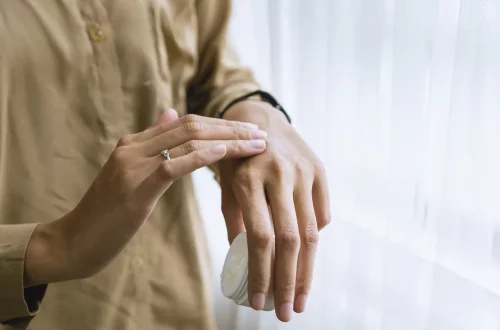
Do Springer Spaniels Shed? Understanding Their Shedding Patterns
Springer Spaniels are beloved for their friendly demeanor, intelligence, and energetic nature. These medium-sized dogs, originally bred for hunting, have become cherished family pets in many households. Their affectionate personality, combined with their playful spirit, makes them a popular choice among dog lovers. However, as with any breed, potential owners often have questions about their care, particularly regarding shedding. Shedding is a natural process for dogs, but the extent and frequency can vary significantly between breeds.
Understanding the shedding patterns of Springer Spaniels is essential not only for maintaining a clean home but also for ensuring the well-being of your furry friend. Pet owners seek to create a comfortable living environment while managing the inevitable presence of dog hair. Additionally, being informed about a breed’s grooming needs can help foster a healthier coat and skin, which is vital for the dog’s overall health. In this article, we will explore the shedding characteristics of Springer Spaniels, offering insights into how to manage their fur and what factors influence their shedding.
Understanding Shedding in Dogs
Shedding is a natural biological process that occurs in dogs, including Springer Spaniels. Essentially, it refers to the loss of old or damaged hair to make way for new growth. This cycle is influenced by several factors, including genetics, seasonal changes, and overall health. For many dog owners, shedding can be a source of concern, as it often leads to increased cleaning efforts around the home.
Most dogs experience two main shedding seasons each year: spring and fall. During these times, dogs typically lose their undercoat in preparation for the warmer or cooler months ahead. For breeds like the Springer Spaniel, which have a double coat, this can mean significant shedding. The outer coat is designed to repel water and dirt, while the soft undercoat provides insulation. The shedding process helps maintain the health of the coat, ensuring that any damaged or old hair is replaced.
It’s important to note that not all dogs shed equally. Some breeds are known for being hypoallergenic, producing minimal dander and hair. In contrast, breeds like Springer Spaniels will shed year-round, with peaks during seasonal changes. Understanding this shedding pattern can help owners better prepare for the maintenance required to keep their homes clean.
Moreover, several factors can influence the amount a Springer Spaniel sheds. Nutrition plays a crucial role in maintaining coat health; a diet rich in omega fatty acids can improve fur quality and reduce excessive shedding. Additionally, regular grooming can help manage loose hair and prevent matting, contributing to a healthier coat. Routine baths can also play a part, though it’s important to avoid over-bathing, which can strip natural oils and lead to skin issues.
Factors Influencing Shedding in Springer Spaniels
Several factors can affect the shedding patterns of Springer Spaniels. Understanding these elements can help owners manage their pets’ grooming needs effectively. One of the primary contributors to shedding is genetics. As a breed, Springer Spaniels are genetically predisposed to have a double coat, which inherently leads to more shedding compared to single-coated breeds. The structure of their fur allows for insulation and protection against the elements, but it also means that they will lose more hair.
Environmental factors also play a significant role in shedding. Dogs often respond to changes in temperature and humidity, which can trigger the shedding of their coats. For instance, as the weather warms up, dogs may shed their winter coats to prepare for the heat. Conversely, as temperatures drop, they may grow thicker fur to stay warm. These seasonal changes can lead to noticeable fur loss, making it seem like your Springer Spaniel is shedding excessively.
Health is another critical factor influencing shedding. A dog that is stressed or anxious may shed more than usual. Stressful situations, such as moving to a new home or changes in routine, can lead to increased shedding. Additionally, underlying health issues, such as skin infections, allergies, or hormonal imbalances, can contribute to excessive fur loss. Therefore, it’s crucial for owners to monitor their dogs’ health and consult a veterinarian if they notice significant changes in shedding patterns.
Diet also impacts shedding. A well-balanced diet rich in nutrients, particularly essential fatty acids, can lead to a healthier coat and less shedding. Owners should ensure that their Springer Spaniels receive high-quality dog food, supplemented with vitamins that promote skin and coat health. Hydration is equally important; a well-hydrated dog is less likely to experience dry skin, which can exacerbate shedding.
Grooming Tips for Managing Shedding
Effective grooming is essential for managing the shedding of Springer Spaniels. Regular grooming not only helps control loose hair but also promotes a healthy coat and skin. One of the best practices for grooming these dogs is to establish a routine that suits their shedding patterns. During peak shedding seasons, more frequent brushing may be necessary to keep the shedding under control.
Using the right grooming tools is also crucial. A slicker brush or an undercoat rake can help remove loose fur from the undercoat, which is often where the majority of shedding occurs. Regular brushing, at least once or twice a week, can significantly reduce the amount of hair that ends up on your furniture and floors. Moreover, this practice can help distribute natural oils throughout the coat, improving its overall health and shine.
Bathing your Springer Spaniel can also play a role in managing shedding. While it’s important not to over-bathe, a bath every few months can help remove dead hair and dander. When bathing, using a high-quality dog shampoo designed for shedding can enhance the process. Follow up with a good conditioner to keep the coat moisturized and healthy.
Another effective strategy for managing shedding is to create a designated space for your dog to shed. This could be a specific room with washable flooring or an outdoor area where loose hair can be easily cleaned. Training your dog to stay in these areas during shedding seasons can help contain the mess.
Lastly, consider investing in a vacuum designed for pet hair. These vacuums often come with specialized attachments that can help you quickly remove hair from furniture, carpets, and other surfaces. Regular cleaning will complement your grooming efforts, ensuring that your home remains fur-free.
Health Considerations Related to Shedding
While shedding is a normal part of a dog’s life, excessive shedding can sometimes indicate underlying health issues. As mentioned earlier, factors such as stress, poor diet, and skin conditions can exacerbate shedding. It’s important for dog owners to be vigilant and observe any abnormal changes in their pet’s shedding patterns.
If a Springer Spaniel suddenly begins shedding excessively or develops bald patches, it may be time for a veterinary visit. Conditions such as allergies, parasite infestations, or skin infections can lead to increased shedding and discomfort. Identifying and treating these issues promptly can help restore your dog’s coat health.
Additionally, hormonal changes can affect shedding. For instance, female dogs may experience changes in their coat during heat cycles or after giving birth. Spaying or neutering can also influence shedding patterns, so it’s essential to discuss these options with a veterinarian.
Regular check-ups are critical for maintaining your dog’s overall health. Routine veterinary visits can help catch potential health problems early, ensuring your Springer Spaniel remains happy and healthy. Monitoring your dog’s weight, diet, and activity levels can also aid in identifying any changes that may affect shedding.
In summary, while shedding is a natural occurrence for Springer Spaniels, understanding the factors that influence it and taking proactive measures can help owners manage it effectively. By maintaining a consistent grooming routine, providing a balanced diet, and keeping an eye out for health issues, pet owners can ensure that their beloved companions remain healthy and comfortable.
**Disclaimer:** This article is not intended as medical advice. For any health concerns regarding your pet, please consult a qualified veterinarian.




